Optimization of Deodorization and Analysis of Flavor Change of Blue Mussel (Mytilus edulis) Hydrolysate by Yeast Fermentation
-
摘要: 为了消除贝类酶解物的腥味和苦味,本文以贻贝酶解液为研究对象,使用安琪果酒酵母进行发酵并以感官评分和蛋白损失率为指标对酵母添加量、发酵温度和发酵时间进行研究,确定发酵参数。利用感官科学结合氨基酸自动分析技术、质谱分析技术探究了发酵前后风味轮廓的差异。结果表明,当果酒酵母添加量为0.2%,在35 ℃下发酵2.0 h处理后,贻贝酶解液的鱼腥味、泥土味、哈喇味显著下降,发酵味和果香显著提升(P<0.05)。甜味氨基酸含量由1.33 mg/g显著上升至1.99 mg/g(P<0.05),鲜味氨基酸含量由1.60 mg/g提高到1.93 mg/g,苦味氨基酸含量由3.64 mg/g下降至3.34 mg/g。贻贝酶解液中共检测出挥发性风味物质32种,发酵后增加到40种,主要包括醛类、醇类、酯类、酸类、酮类和呋喃类化合物,其中辛醛、2,4-庚二烯醛、2-辛烯醛、壬醛、1-辛烯-3-醇为贻贝酶解液主要的异味来源。发酵后壬醛、2,4-庚二烯醛、2-辛烯醛不再作为酶解液的风味活性成分,产生鱼腥味的1-辛烯-3-醇和辛醛的OAV值也在发酵后大幅下降;此外,发酵后新增了癸醛、苯乙醛、2-壬酮、2-十一酮为酶解液的风味成分,为酶解液提供了花果香和清香。因此,酵母发酵法有效改善了贻贝酶解液的异味。本研究为贝类酶解液异味的消除提供了一定的理论依据。Abstract: In order to eliminate the fishy and bitter taste of mussel hydrolysate, the fermentation process of mussel (Mytilus edulis) hydrolysate were studied in this paper. Angel fruit wine yeast was used to ferment and the optimal fermentation technology was determined by optimizing the yeast addition, fermentation temperature and time according to sensory score and protein loss rate. The difference of flavor profile before and after fermentation was studied by sensory science combined with automatic amino acid analysis and mass spectrometry. The results showed when the fruit wine yeast was added at 0.2% and fermented at 35 ℃ for 2.0 h after treatment, the fishy, earthy and halal flavor of the hydrolysate decreased significantly, while the fermented and fruity flavor increased significantly (P<0.05). The content of sweet amino acid increased from 1.33 to 1.99 mg/g (P<0.05), the content of umami amino acid increased from 1.60 to 1.93 mg/g, the content of bitter amino acid decreased from 3.64 to 3.34 mg/g. A total of 32 volatile flavor compounds were detected in the mussel hydrolysate, which increased to 40 after fermentation, including aldehydes, alcohols, esters, acids, ketones and furans, 4-heptadienal, 2-octenal, nonanal and 1-octene-3-ol were the main odor sources in the mussel hydrolysate. After fermentation, nonanal, 2,4-heptadienal and 2-octenal were no longer used as flavor active components of mussel hydrolysates, and the OAV values of 1-octene-3-ol and octenal, which produced fishy odor, also decreased significantly, after fermentation, decanal, phenylacetaldehyde, 2-nonone and 2-undecanone were added as the flavor components of the mussel hydrolysate, which provided the floral and fruity aroma and fragrance for the mussel hydrolysate. Therefore, yeast fermentation could effectively improve the odor of mussel hydrolysate. This study would provide a theoretical basis for the elimination of odor in shellfish hydrolysate.
-
Keywords:
- mussel (Mytilus edulis) /
- fermentation /
- hydrolysis /
- SPME-CG-MS /
- volatile flavor composition
-
贻贝,俗称海红,是一种双壳类软体动物[1],生长快、季节性强、产量高、营养物质丰富[2]。紫贻贝(Mytilus edulis)是常见的贻贝品种之一,主要分布于东北太平洋沿岸,西班牙至丹麦沿岸以及我国东南海沿岸。2020年我国贻贝养殖产量达到88.6万多吨,大多以鲜销为主,深加工率较低。小分子多肽或低聚肽具有不需消化直接吸收、不需消耗人体能量、吸收速度快、优先吸收、在人体中合成蛋白质的速率较氨基酸快等诸多优点[3]。因此,利用生物酶解技术将贻贝蛋白水解成不同分子量的寡肽成为当下研究热点。然而,在水解过程中往往会产生苦味、腥味等异味[4],制约了贻贝的加工利用。为此,能否有效改善酶解物的异味就成为制约贻贝蛋白水解产物应用的关键。
常见脱腥方法包括包埋法[5]、吸附法[6-7]、酸碱中和法等。与之相比生物脱腥法具有高效便捷、安全性高等优点。发酵作为最常见的生物脱腥法,是改善腥味的有效方式,其中,酵母发酵法在消除水产品异味中已被广泛使用[8]。酵母多孔且结构松散,能够在发酵过程中吸附异味物质,并且能利用发酵过程中产生的发酵产物对异味进行掩蔽[9-11]。周强等[12]利用酵母发酵法对明虾的下脚料进行脱腥研究,发酵脱腥后的下脚料风味得到显著改善。李亚会等[13]通过酵母发酵法处理罗非鱼酶解液,脱腥后罗非鱼酶解液腥味降低,且呈现发酵的清香。然而,目前通过酵母发酵使紫贻贝酶解液脱腥的工艺探究较少,且发酵脱腥前后酶解液中挥发性风味物质的具体变化尚且研究不足。
本研究通过探究酵母发酵贻贝酶解液的条件,并利用感官评价、氨基酸分析、固相微萃取-气相色谱-质谱(SPME-GC-MS)等技术对酵母发酵处理前后贻贝酶解液的风味差异进行分析,旨在探究酵母发酵对贻贝酶解液风味改善的可行性。本研究结果将为贝类酶解物制品的开发及其风味调控提供实验依据。
1. 材料与方法
1.1 材料与仪器
新鲜带壳紫贻贝 购买于青岛当地海鲜市场;耐高糖活性酵母、低糖活性酵母、果酒酵母、啤酒酵母、米曲 安琪股份有限公司;动物蛋白酶(由风味蛋白酶、内切酶、外切酶复合而成的中性复合酶,酶活105 U/g) 广西东恒华道酶制剂公司。
GL-21M高速冷冻离心机 湘仪离心机仪器有限公司;QP2010-SE气相色谱质谱联用仪、VT32-20顶空进样瓶 日本岛津公司;57329U DVB/CAR/PDMS萃取头 西格玛奥德里奇(上海)贸易有限公司;L-8500A氨基酸全自动分析仪 日本日立HITACHI公司。
1.2 实验方法
1.2.1 酶解液制备
将新鲜紫贻贝去壳取肉,贻贝肉置于4 ℃冰水中浸泡30 min进行脱盐[14],重复4次。其中,冰水体积为贻贝的5倍。将脱盐后的贻贝置于匀浆机搅打制成贻贝匀浆。按照1:2的料液比添加贻贝匀浆和蒸馏水,用均质分散机进行分散混匀。使用动物蛋白酶(3000 U/g)对上述匀浆液进行酶解,在50 ℃下酶解4 h后于100 ℃煮沸灭酶10 min,置于20~25 ℃水浴中冷却。最后,在转速8000×g下离心15 min,过滤取上清液得到贻贝酶解液。
1.2.2 酵母的筛选
取5份贻贝酶解液100 g于锥形瓶中,分别添加0.5%的耐高糖活性酵母、低糖活性酵母、果酒酵母、啤酒酵母和米曲,于35 ℃发酵1.5 h,在转速8000×g下离心10 min,取上清液进行感官评定。
1.2.3 发酵脱腥工艺探究
1.2.3.1 工艺流程及操作要点
工艺流程:贻贝酶解液→发酵→离心→过滤取上清→发酵后贻贝酶解液
采用1.2.2筛选出的酵母进行发酵脱腥,探究最佳的酵母添加量、发酵温度和发酵时间。
在转速8000×g下离心10 min,去除发酵处理后酶解液中的残余酵母,上清液即为发酵后的贻贝酶解液。
1.2.3.2 发酵条件的单因素实验
采用1.2.2筛选出的酵母进行发酵脱腥工艺优化,固定发酵时间1.5 h,发酵温度35 ℃,考察酵母添加量(0.1%、0.2%、0.3%、0.4%、0.5%)对贻贝酶解液脱腥效果的影响;固定发酵时间1.5 h,酵母添加量0.2%,考察发酵温度(25、30、35、40、45 ℃)的影响;固定发酵温度35 ℃,酵母添加量0.2%,考察发酵时间(1.0、1.5、2.0、2.5、3.0 h)的影响。
1.2.4 指标测定
1.2.4.1 感官评定
参照NY/T 436-2009感官评价部分,选择12位品评员(6男6女)对发酵后酶解液的气味、滋味、色泽、组织状态进行评分,取均值作为感官评价得分。具体感官评价标准见表1。
表 1 发酵后贻贝酶解液感官评价标准Table 1. Sensory evaluation of Mytilus edulis enzymatic hydrolysate after fermentation项目 评分标准 分值 气味
(25分)
滋味
(25分)
色泽
(25分)
组织状态
(25分)无明显腥味,有强烈清香
腥味轻,清香重
腥味一般,清香一般
腥味重,清香轻
腥味强烈,无明显清香
无明显苦味,有强烈鲜味、甜味
苦味轻,鲜味、甜味重
苦味一般,鲜味、甜味一般
苦味重,有鲜味、甜味轻
苦味强烈,无明显鲜味、甜味
浅黄色
黄色
深黄色
黄绿色
深绿色
状态均匀,无明显沉淀
状态较均匀,仅有少量沉淀
状态不均匀,有较多沉淀
状态不均匀,有大量沉淀
状态浑浊,无澄清液体21~25
16~20
11~15
6~10
0~5
21~25
16~20
11~15
6~10
0~5
21~25
16~20
11~15
6~10
0~5
21~25
16~20
11~15
6~10
0~5为更详细探究发酵脱腥前后酶解液的风味差别,对发酵前后的样品进行风味剖面检验。参考Richards等[15]的方法,略作修改:将样品放于20 mL一次性食品调料盒中,在密封条件下室温平衡30 min。12位感官评定员分别对脱腥前后的酶解液进行嗅闻,并评价气味。本实验采用国际标准ISO 6564-1985《感官分析方法学—风味剖面检验》中的独立方法对样品进行感官词汇描述及评价,最后每一项的分值取所有评价员评定结果的平均值。经感官评定员嗅闻讨论,选择鱼腥味、哈喇味、泥土味、发酵味、果香作为感官描述词。
1.2.4.2 蛋白质损失率
参照国标GB 5009.5-2016,使用凯氏定氮法测定发酵前后贻贝酶解液的蛋白含量,发酵后酶解液的蛋白损失率由下列公式计算。
蛋白损失率(%)=1−脱腥后酶解液蛋白含量脱腥前酶解液蛋白含量×100 1.2.4.3 游离氨基酸分析
参考薛永霞等[16]分析方法略作修改,分别称取2.00 g样品,加入15 mL 15%(w/w)的三氯乙酸溶液,匀浆后静置2 h,冷冻离心(10000 r/min、15 min、4 ℃),取上清液5 mL,用3 mol/L的NaOH溶液调pH至2.0,定容至10 mL,摇匀,过0.22 μm滤膜后采用L-8500A氨基酸全自动分析仪进行测定。
1.2.4.4 味觉活性值(TAV)的计算
当某种滋味物质的TAV≥1时,说明其对整体滋味有贡献,称其为味觉活性物质。TAV表示每种滋味物质含量与阈值的比值[17]。
1.2.4.5 SPME-GC-MS分析条件
参考张梅超[18]的方法。固相微萃取条件:在20 mL的顶空进样瓶中装入5 mL待测样品,旋紧瓶盖后平稳放置在振荡器上,设置温度60 ℃、萃取时间30 min,结束后立即将萃取头插入QP2010-SE的进样口,解析温度250 ℃,解析时间4 min。
气相色谱条件:HP-INNOWax色谱柱:30 m×0.25 mm×0.25 μm,载气为高纯氦气(99.999%),氦气流速为1.0 mL/min,不分流进样,进样口温度250 ℃。起始柱温40 ℃保持2 min,再以8 ℃/min速度升温至250 ℃保持10 min。
质谱条件:溶剂切除时间1 min,离子阱温度150 ℃,传输线温度250 ℃,选用Scan采集方式并设置扫描范围为45~450 amu,扫描速率0.220 s/scan。EI电子能量70 eV。
数据处理:采用岛津GC-MSsolution(Version 4.4.1)工作站的NIST17.L Libraries谱库自动检索各组分质谱数据,选取匹配度大于80%的鉴定结果。用峰面积归一化法确定物质的相对含量。
1.2.4.6 气味活性值(OAV)的计算
当某种物质的OAV≥1时,说明其对整体气味有贡献,称其为气味活性物质。计算公式如下[19]:
OAV=CiTi 式中:Ci代表某一种风味物质的相对浓度;Ti代表其对应的感觉阈值。
1.3 数据处理
实验数据平行测定三次,由Excel 2010和SPSS 22.0对数据进行统计分析,P<0.05表示差异显著,分析结果表示为平均值±标准差,利用Origin 2018对分析结果进行绘图。
2. 结果与分析
2.1 酵母的筛选
不同酵母发酵处理后的酶解液感官评分有明显差别,因此有必要进行筛选,由图1可知经果酒酵母发酵处理后的酶解液感官评分最高(72.83分)。果酒酵母发酵处理后,贻贝酶解液颜色呈浅黄色、质地均一、无明显沉淀,且腥味、苦味较弱,有发酵的清香。这可能是因为果酒酵母具有较高的发酵和耐渗透压能力[20]。低糖酵母和耐高糖酵母发酵处理后的酶解液状态相似,颜色均呈浅黄色,无明显沉淀,但是腥味、苦味较重,且发酵产生的酸味较重。啤酒酵母发酵处理后的酶解液颜色呈深黄色,腥味、苦味较重,且发酵产生了刺鼻的异味。米曲处理后的酶解液呈黄绿色,且有明显杂质,腥味、苦味重,令人无法接受。综上,选择果酒酵母作为后续进一步发酵脱腥处理的菌种。
2.2 发酵脱腥工艺条件单因素实验结果
发酵的脱腥效果受到酵母添加量、发酵温度、发酵时间、酶解液渗透压等因素的影响,这些因素会直接影响酵母的存活率及发酵效率[21]。本研究将蛋白损失率和感官评分作为评价指标,评价不同条件下发酵的脱腥效果和对酶解液营养品质的影响。
酵母添加量对脱腥效果的影响如图2所示。随着酵母添加量的增加,感官评分呈先上升后下降的趋势,于添加量为0.2%时达到最大值68.00±1.05分。其原因可能是加入过量的酵母,过度引入了酵母本身的酸味,使酶解液产生刺激性味道。蛋白损失率随着酵母添加量的增加而上升后趋于稳定,可能是因为酵母量增多,使蛋白质进一步转化,同时酵母的吸附能力变强,导致蛋白损失率增大[22],而后继续添加使酵母逐渐为底物所饱和,蛋白损失率趋于稳定。综合感官评分选择酵母的最适添加量为0.2%。
如图3所示,随着发酵温度的上升,感官评分呈先升高后下降的趋势,于35 ℃达到最大值78.00±1.27分,蛋白损失率随着温度上升呈上升的趋势,可能是因为35 ℃条件下酵母发酵产生的酶活性最高,能更好地进行物质转化反应[23],而根据吸附动力学原理,在一定范围内,吸附能力随温度升高而增大。因此,兼顾感官评分和蛋白损失率,选择最适发酵温度为35 ℃。
发酵时间对脱腥效果的影响如图4所示。随着发酵时间的延长,感官评分先上升后下降,于2.0 h达到84.00±1.24分,这可能是由于发酵2.0 h后,酵母对酶解液中的异味物质转化最为完全,随着发酵时间增加,发酵程度过深,部分小分子肽、氨基酸被进一步分解成氮氧化物,导致感官评分下降,蛋白损失率增大[24],且随着时间的延长,酵母的吸附量增大,也会导致蛋白的损失。兼顾感官评分和蛋白损失率,选择最适发酵时间为2.0 h。
因此,最优发酵条件为:酵母添加量0.2%、发酵温度35 ℃、发酵时间2.0 h。在此条件下感官评分最高,为84.00±1.24分,蛋白损失率为5.76%±0.14%。
2.3 感官描述风味剖面分析
由图5可知,酶解液的主要气味为鱼腥味、泥土味和哈喇味,经发酵脱腥后,贻贝酶解液的鱼腥味、泥土味、哈喇味显著降低(P<0.05),发酵味和果香味显著上升(P<0.05)。可能是因为酵母在发酵过程中,异味物质被转化为含有果香味的醛类、醇类及酯类等,使脱腥后的酶解液果香味明显增加。同时,在发酵过程中产生特有的酵母发酵产物,使酶解液出现令人愉悦的发酵清香[25]。综上,发酵脱腥后酶解液整体风味得到明显改善。
2.4 游离氨基酸组成及TAV分析
蛋白水解后产生大量的游离呈味氨基酸[26],是重要的呈味物质。游离氨基酸根据其呈味特点主要划分为鲜味、甜味和苦味氨基酸。游离氨基酸对滋味的作用不仅受其含量和阈值的影响,有时还会与核苷酸等互相作用而共同影响风味。例如谷氨酸和5’-核苷酸的协同作用可使鲜味明显增强[27]。谷氨酸钠与苯丙氨酸、酪氨酸等同样具有协同增鲜作用[28]。如图6,经过酵母发酵后,贻贝酶解液游离氨基酸含量由9.99 mg/g上升至10.73 mg/g。其中,甜味氨基酸含量由1.33 mg/g显著上升至1.99 mg/g(P<0.05),鲜味氨基酸含量由1.60 mg/g提高到1.93 mg/g,苦味氨基酸含量由3.64 mg/g下降至3.34 mg/g,甜/苦味氨基酸和苦/甜味氨基酸含量略微增加。
在游离氨基酸分析中,各成分对样品整体滋味的贡献程度可用味觉活性值(TAV)准确衡量。TAV越大,表示该物质对样品总体味觉贡献度越高[17]。尤其是当TAV>1时,可以独立于其他滋味物质存在。由表2可知,经发酵脱腥后的贻贝酶解液TAV>1的成分由5种减少为4种,减少了缬氨酸、异亮氨酸两种具有苦味滋味特点的成分,增加了丙氨酸这种具有甜味滋味特点的成分。发酵脱腥处理后的酶解液中贡献最大的滋味成分仍然为具有鲜味滋味的谷氨酸(TAV值为5.18),天冬氨酸TAV值上升;甜味氨基酸苏氨酸、丝氨酸、甘氨酸、丙氨酸的TAV值均上升,甜味氨基酸的总TAV值显著上升了0.57(P<0.05),说明甜味的滋味特征增加;苦味氨基酸总TAV值下降,整体苦味有一定降低。该结果与王新宇等[29]的结果基本一致,但个别氨基酸含量变化趋势有所不同,可能是由于底物和酵母菌种不同所致。17种氨基酸中只有异亮氨酸的含量显著下降(P<0.05),这可能是由于酵母菌体对异亮氨酸的消耗速率大于水解蛋白的产生速率所导致[30]。综上说明,经发酵处理可以使酶解液甜味氨基酸含量显著增加(P<0.05),鲜味氨基酸含量有所提高,苦味氨基酸含量下降,整体滋味得到改善。这也与最佳发酵条件下处理得到的酶解液感官评价结果一致。
表 2 发酵前后贻贝酶解液中游离氨基酸含量及TAV分析Table 2. Analysis of free amino acids and TAV in Mytilus edulis enzymatic hydrolysate before and after fermentation名称 滋味特征 阈值(mg/g)[17] 含量(mg/g) TAV 酶解液 发酵液 酶解液 发酵液 苏氨酸 甜 2.60 0.29±0.02ab 0.33±0.05b 0.11 0.13 丝氨酸 甜 1.50 0.28±0.06a 0.61±0.03b 0.19 0.41 甘氨酸 甜 1.30 0.26±0.11ab 0.43±0.06b 0.20 0.33 丙氨酸 甜 0.60 0.48±0.07ab 0.61±0.12b 0.81 1.02 天冬氨酸 鲜 1.00 0.29±0.04a 0.37±0.06ab 0.29 0.38 谷氨酸 鲜 0.30 1.31±0.12a 1.55±0.23ab 4.36 5.18 组氨酸 甜/苦(+) 0.20 0.19±0.06a 0.20±0.02a 0.96 0.98 精氨酸 甜/苦(+) 0.50 1.00±0.23a 1.03±0.11a 2.00 2.06 脯氨酸 甜/苦(+) 3.00 0.09±0.07a 0.11±0.05a 0.03 0.04 缬氨酸 苦 0.40 0.43±0.04a 0.37±0.02ab 1.06 0.92 异亮氨酸 苦 0.90 1.04±0.06a 0.85±0.02b 1.16 0.94 亮氨酸 苦 1.90 0.91±0.23a 0.92±0.12a 0.48 0.50 酪氨酸 苦 0.91 0.59±0.08a 0.54±0.03ab 0.65 0.59 苯丙氨酸 苦 0.90 0.66±0.06a 0.66±0.13a 0.75 0.73 甲硫氨酸 苦/甜(−) 0.30 0.27±0.02a 0.30±0.04a 0.91 0.99 赖氨酸 苦/甜(−) 0.50 1.01±0.21a 1.03±0.15a 2.02 2.07 注:同行不同小写字母表示差异显著,P<0.05。 2.5 发酵处理前后贻贝酶解液SPME-GC-MS分析结果
2.5.1 挥发性成分风味分析
采用SPME-GC-MS技术,经标准谱库检索匹配,以面积归一化法计算风味物质相对百分含量,发酵脱腥处理前后的贻贝酶解液挥发性风味成分分析结果见图7和表3。由表3和图7可知,贻贝酶解液共检测出32种挥发性风味成分,其中醛类10种,相对含量40.26%;醇类4种,相对含量15.18%;酯类6种,相对含量2.89%;酸类4种,相对含量4.81%;其他化合物(酮类、烯烃类、呋喃类、醚类、苯类)8种,相对含量4.60%。发酵脱腥后共检测出40种挥发性风味成分,其中醛类增加3种,相对含量下降13.72%;醇类增加2种,相对含量增加4.81%;酯类增加2种,相对含量增加16.54%;酸类增加2种,相对含量增加4.28%;其他化合物种类减少1种,相对含量增加6.48%。发酵后贻贝酶解液挥发性风味成分组分及相对含量都发生了变化,说明发酵对酶解液风味产生了一定影响。
表 3 发酵前后贻贝酶解液的挥发性风味化合物Table 3. Volatile flavor compounds of Mytilus edulis enzymatic hydrolysate before and after fermentation化合物种类 气味特征[33~36,41] 中文名称 保留时间(min) 酶解液(%) 发酵液(%) 醛
1
2
3
4
5
6
7
8
9
10
11
12
13
酯
14
15
16
17
18
19
20
21
22
醇
23
24
25
26
27
28
29
酸
30
31
32
33
34
35
酮
36
37
烯烃
38
39
其他
40
41
42
43
44
桂皮香
青草味、腥臭味
鱼腥味
坚果,紫罗兰香气
青草味、蛤蜊味
花香香气,低浓度呈果香
草腥味、鱼腥味
甜香,蜡香,花香,橘香
苦杏仁味
柑橘味、甜橙香
玫瑰,柑橘香
鸡油香
花和蜡的弱香气
清香带甜的花香
清香和酒香
愉快水果香气
蜂蜜和鸢尾样的香气
玫瑰底香果香
花香、蔬菜香和豆香
菠萝的甜香
淡的冬青油香气
果香、奶油香
刺激性的蒜臭味
土腥味、菇类气味
强烈芳香气味
玫瑰香、蜂蜜香
似芳樟醇和松油醇味
紫罗兰香
柠檬香
腥臭味
脂肪味
汗似的、酸臭
油脂味
令人愉悦的酸味
月桂油的香气
花果香、油脂香气
柑橘类香气
有类似萜烯气味
有类似樟脑气味
豆香、面包香、麦芽香
有特有气味
土豆和蔬菜香气
芳香香气
有特殊的烷基苯酚气味
肉桂醛
辛醛
壬醛
(E,E)-2,4-壬二烯醛
2-辛烯醛
苯乙醛
2,4-庚二烯醛
癸醛
苯甲醛
2-癸烯醛
10-十一烯醛
2,4-癸二烯醛
十六碳醛
三甲基乙酸香芹烯酯
乳酸乙酯
2-乙基己醇乙酸酯
肉豆蔻烯酸甲酯
甲酸庚酯
乙酸二氢香芹酯
正己酸乙酯
水杨酸乙酯
十六酸乙酯
乙硫醇
1-辛烯-3-醇
1-庚醇
苯乙醇
4-异丙烯基-1-环己烯甲醇
月桂醇
1-十一醇
二十二碳六烯酸
花生四烯酸
丁酸
十八碳三烯酸
柠檬酸
月桂酸
2-壬酮
2-十一酮
1,3-环戊二烯
双环戊二烯
2-乙基呋喃
1,3,5-三甲苯
2-戊基呋喃
苯酚聚氧乙烯醚
对叔丁基苯酚
13.208
14.096
18.501
19.341
19.955
20.996
22.762
22.850
23.946
28.495
32.552
34.720
37.494
0.137
2.434
4.359
5.991
21.139
37.592
46.174
46.692
47.779
1.595
20.982
22.534
35.248
35.777
37.325
38.386
6.718
7.080
27.050
39.895
40.106
55.618
18.288
26.789
1.769
32.971
3.375
9.534
11.628
46.107
48.68
ND
15.98
1.86
0.12
7.61
0.35
7.31
ND
4.30
0.23
2.50
0.36
ND
0.62
ND
ND
0.16
0.37
0.76
ND
0.54
0.44
0.88
10.02
0.38
ND
0.90
ND
ND
0.17
0.50
3.05
1.09
ND
ND
0.53
0.12
0.11
1.18
0.57
ND
1.34
0.24
0.51
2.54
1.63
0.27
2.23
0.17
2.92
0.36
7.11
0.94
2.02
3.04
3.01
0.66
ND
12.97
1.18
0.29
0.76
0.63
1.47
0.94
1.19
0.49
0.63
0.76
4.75
ND
5.62
4.74
0.37
0.43
0.49
0.52
2.46
4.82
5.12
3.95
ND
0.83
0.34
0.48
0.12
ND
0.24醛类物质在食品风味中起主导作用。醛类阈值较低,且部分醛类物质可与其他组分产生强烈的风味叠加效果,因此痕量存在时即可对风味产生显著贡献[31]。经发酵脱腥处理后,贻贝酶解液中的醛类化合物增加3种,但相对含量减少13.72%。脱腥前呈现不愉快气味的挥发性醛类物质辛醛(腥臭味)、2-辛烯醛(蛤蜊味)、2,4-庚二烯醛(鱼腥味)、壬醛(鱼腥味)脱腥前相对含量分别为15.98%、7.61%、7.31%、1.86%,脱腥后分别降低为1.63%、0.17%、0.36%、0.27%,这些物质主要是由不饱和脂肪酸氧化产生,是酶解液中腥味的主要来源[32]。而呈现愉快气味的(E,E)-2,4-壬二烯醛(坚果,紫罗兰香气)、苯乙醛(花果香)、2-癸烯醛(甜橙香)、10-十一烯醛(玫瑰,柑橘香)、2,4-癸二烯醛(鸡油香)相对含量由脱腥前的0.12%、0.35%、0.23%、2.50%、0.36%分别上升至3.27%、2.23%、2.92%、2.02%、3.01%。此外,经发酵处理后新增了肉桂醛(桂皮香)、癸醛(甜香、蜡香、花香、橘香)、十六碳醛(花和蜡的弱香气),其相对含量分别为2.54%、7.11%和0.66%,它们共同为酶解液提供了令人愉悦的花果香、脂香[33-34]。综上所述,发酵脱腥处理后的酶解液呈异味的醛类化合物显著减少,令人愉悦的醛类化合物明显增多。该结论与刘慧[35]在利用酵母粉发酵牡蛎蛋白饮料进行脱腥处理中得到结论相似。
发酵后醇类化合物增加2种,相对含量提高4.81%。经过发酵处理后,酶解液中新增了发酵产物苯乙醇、月桂醇、1-十一醇,分别呈玫瑰香、紫罗兰香、柠檬香,它们协同作用,对酶解液风味起到正面影响。此外,在醇类风味化合物中,部分不饱和醇类阈值较低,因此会对风味产生显著影响。脱腥前酶解液中的不饱和醇1-辛烯-3-醇的相对含量为10.02%,发酵脱腥后降为0.63%。1-辛烯-3-醇被证明是金头鲷和大西洋马鲛鱼脂质氧化的特征标记物,会与过氧化值和TBARS一起上升[36],具有土腥味、蘑菇味,阈值较低,是水产品中腥味的主要来源。推断1-辛烯-3-醇含量显著(P<0.05)降低的原因可能是酵母在发酵过程中,通过微生物的新陈代谢作用将此类物质转化为无异味物质[37],从而改善贻贝酶解液风味,黄可欣[38]在利用酵母发酵牡蛎酶解液脱腥中也得到此结论。综上,发酵处理使得酶解液中令人不愉悦的醇类化合物减少,令人愉悦的醇类化合物增加。
酯类化合物是由醇和羧酸通过酯化反应生成,通常香气良好[39]。脱腥后酯类化合物增加2种,相对含量增加16.54%,相比与其他风味化合物变化较大,已有报道称酵母属在发酵过程中酯类代谢产物变化明显[40]。其中,发酵后新增的发酵产物乳酸乙酯相对含量为12.97%,具有清香和酒香;正己酸乙酯相对含量为1.47%,具有菠萝的甜香[41]。酮类物质相对含量的改变可能与部分氨基酸的降解和美拉德反应有关,贝类中发现的甲基酮(C3~C17)一般可为整体气味贡献芳香味、水果香[42]。发酵后2-壬酮(花果香)和2-十一酮(柑橘类香气)相对含量分别提高4.69%和3.83%。有研究认为酸类来源于脂肪酸的氧化或者微生物对氨基酸发酵作用[43-44],发酵后新增的月桂酸(相对含量4.82%)呈月桂油的香气;柠檬酸(相对含量2.46%)可以使产品味道浑厚丰满。呋喃类成分通常有较低的香气阈值,会对整体气味产生轻微影响,脱腥后酶解液中的2-戊基呋喃和2-乙基呋喃相对含量均略有下降。
综上所述,果酒酵母发酵处理贻贝酶解液使酶解液中呈腥味、泥土味、哈喇味等的异味物质显著减少,显著增加了令人愉悦气味的醛类、酯类、醇类物质,赋予了酶解液花果香以及发酵后的清香,这也与感官评价结果一致。说明果酒酵母能够有效改善贻贝酶解液的风味。
2.5.2 气味活性物质分析
以OAV为评价标准,区分每种挥发性物质对样品整体气味特征的贡献,当OAV>1时,说明该物质对整体风味有贡献,呈为气味活性物质[16]。发酵处理前后贻贝酶解液中的气味活性物质见表4。贻贝酶解液中气味活性物质有9种,包括辛醛、1-辛烯-3-醇、2-辛烯醛、(E,E)-2,4-壬二烯醛、2,4-癸二烯醛、壬醛、2-癸烯醛、2,4-庚二烯醛、苯甲醛,其中辛醛、1-辛烯-3-醇、2-辛烯醛、壬醛的OAV值相对较大,分别为91.31、40.08和10.15、6.76,它们协同作用贻贝酶解液呈鱼腥味、泥土味及哈喇味[45],这与感官描述结果一致。
表 4 发酵前后贻贝酶解液的风味活性物质分析Table 4. Analysis of flavor active substances in Mytilus edulis enzymatic hydrolysate before and after fermentation编号 化合物 阈值[36,38,41]
(μg/kg)OAV 酶解液 发酵液 1
2
3
4
5
6
7
8
9
10
11
12
13
14辛醛
1-辛烯-3-醇
2-辛烯醛
(E,E)-2,4-壬二烯醛
2,4-癸二烯醛
壬醛
2-癸烯醛
2,4-庚二烯醛
癸醛
苯甲醛
苯乙醛
正己酸乙酯
2-壬酮
2-十一酮0.70
1.00
3.00
0.09
0.35
1.10
0.30
15.4
0.10
3.00
4.00
1.00
5.00
5.5091.31
40.08
10.15
5.33
4.11
6.76
3.06
1.89
−
5.73
<1.00
−
<1.00
<1.009.31
2.52
<1.00
99.11
34.40
<1.00
26.93
<1.00
284.40
1.25
2.92
5.88
4.09
2.87经果酒酵母发酵处理后,风味活性物质增加至11种,包括癸醛、(E,E)-2,4-壬二烯醛、2-癸烯醛、2,4-癸二烯醛、苯甲醛、辛醛、苯乙醛、1-辛烯-3-醇、正己酸乙酯、2-壬酮、2-十一酮。其中除辛醛和1-辛烯-3-醇之外,其他风味活性物质均具有令人愉悦的气味,它们共同使脱腥后的酶解液呈花果香和发酵的清香[45]。此外,与发酵前的酶解液相比,发酵脱腥后辛醛和1-辛烯-3-醇的OAV值明显降低,而2-辛烯醛、壬醛及2,4-庚二烯醛在发酵脱腥后不再作为风味活性物质。综上,说明果酒酵母可以较好地除去酶解液中的异味物质,达到改善其风味的效果。
3. 结论
本研究通过单因素实验优化贻贝酶解液发酵脱腥工艺,得到最优脱腥条件:使用果酒酵母进行发酵,酵母添加量0.2%,发酵温度35 ℃,发酵时间2.0 h。采用全自动氨基酸分析仪、SPME-GC-MS等方法分析脱腥前后贻贝酶解液风味的具体变化。结果表明,经过果酒酵母发酵后,酶解液中鲜、甜味氨基酸TAV值上升,苦味氨基酸TAV值下降。脱腥前酶解液中的主要异味物质相对含量(如辛醛、1-辛烯-3-醇、2-辛烯醛等)在发酵处理后显著(P<0.05)降低,且脱腥后酶解液中呈花果香等令人愉悦气味的挥发性成分(如癸醛、2-壬酮等)相对含量明显增加。综上所述,酵母发酵法能够有效改善贻贝酶解液的不良风味。
-
表 1 发酵后贻贝酶解液感官评价标准
Table 1 Sensory evaluation of Mytilus edulis enzymatic hydrolysate after fermentation
项目 评分标准 分值 气味
(25分)
滋味
(25分)
色泽
(25分)
组织状态
(25分)无明显腥味,有强烈清香
腥味轻,清香重
腥味一般,清香一般
腥味重,清香轻
腥味强烈,无明显清香
无明显苦味,有强烈鲜味、甜味
苦味轻,鲜味、甜味重
苦味一般,鲜味、甜味一般
苦味重,有鲜味、甜味轻
苦味强烈,无明显鲜味、甜味
浅黄色
黄色
深黄色
黄绿色
深绿色
状态均匀,无明显沉淀
状态较均匀,仅有少量沉淀
状态不均匀,有较多沉淀
状态不均匀,有大量沉淀
状态浑浊,无澄清液体21~25
16~20
11~15
6~10
0~5
21~25
16~20
11~15
6~10
0~5
21~25
16~20
11~15
6~10
0~5
21~25
16~20
11~15
6~10
0~5表 2 发酵前后贻贝酶解液中游离氨基酸含量及TAV分析
Table 2 Analysis of free amino acids and TAV in Mytilus edulis enzymatic hydrolysate before and after fermentation
名称 滋味特征 阈值(mg/g)[17] 含量(mg/g) TAV 酶解液 发酵液 酶解液 发酵液 苏氨酸 甜 2.60 0.29±0.02ab 0.33±0.05b 0.11 0.13 丝氨酸 甜 1.50 0.28±0.06a 0.61±0.03b 0.19 0.41 甘氨酸 甜 1.30 0.26±0.11ab 0.43±0.06b 0.20 0.33 丙氨酸 甜 0.60 0.48±0.07ab 0.61±0.12b 0.81 1.02 天冬氨酸 鲜 1.00 0.29±0.04a 0.37±0.06ab 0.29 0.38 谷氨酸 鲜 0.30 1.31±0.12a 1.55±0.23ab 4.36 5.18 组氨酸 甜/苦(+) 0.20 0.19±0.06a 0.20±0.02a 0.96 0.98 精氨酸 甜/苦(+) 0.50 1.00±0.23a 1.03±0.11a 2.00 2.06 脯氨酸 甜/苦(+) 3.00 0.09±0.07a 0.11±0.05a 0.03 0.04 缬氨酸 苦 0.40 0.43±0.04a 0.37±0.02ab 1.06 0.92 异亮氨酸 苦 0.90 1.04±0.06a 0.85±0.02b 1.16 0.94 亮氨酸 苦 1.90 0.91±0.23a 0.92±0.12a 0.48 0.50 酪氨酸 苦 0.91 0.59±0.08a 0.54±0.03ab 0.65 0.59 苯丙氨酸 苦 0.90 0.66±0.06a 0.66±0.13a 0.75 0.73 甲硫氨酸 苦/甜(−) 0.30 0.27±0.02a 0.30±0.04a 0.91 0.99 赖氨酸 苦/甜(−) 0.50 1.01±0.21a 1.03±0.15a 2.02 2.07 注:同行不同小写字母表示差异显著,P<0.05。 表 3 发酵前后贻贝酶解液的挥发性风味化合物
Table 3 Volatile flavor compounds of Mytilus edulis enzymatic hydrolysate before and after fermentation
化合物种类 气味特征[33~36,41] 中文名称 保留时间(min) 酶解液(%) 发酵液(%) 醛
1
2
3
4
5
6
7
8
9
10
11
12
13
酯
14
15
16
17
18
19
20
21
22
醇
23
24
25
26
27
28
29
酸
30
31
32
33
34
35
酮
36
37
烯烃
38
39
其他
40
41
42
43
44
桂皮香
青草味、腥臭味
鱼腥味
坚果,紫罗兰香气
青草味、蛤蜊味
花香香气,低浓度呈果香
草腥味、鱼腥味
甜香,蜡香,花香,橘香
苦杏仁味
柑橘味、甜橙香
玫瑰,柑橘香
鸡油香
花和蜡的弱香气
清香带甜的花香
清香和酒香
愉快水果香气
蜂蜜和鸢尾样的香气
玫瑰底香果香
花香、蔬菜香和豆香
菠萝的甜香
淡的冬青油香气
果香、奶油香
刺激性的蒜臭味
土腥味、菇类气味
强烈芳香气味
玫瑰香、蜂蜜香
似芳樟醇和松油醇味
紫罗兰香
柠檬香
腥臭味
脂肪味
汗似的、酸臭
油脂味
令人愉悦的酸味
月桂油的香气
花果香、油脂香气
柑橘类香气
有类似萜烯气味
有类似樟脑气味
豆香、面包香、麦芽香
有特有气味
土豆和蔬菜香气
芳香香气
有特殊的烷基苯酚气味
肉桂醛
辛醛
壬醛
(E,E)-2,4-壬二烯醛
2-辛烯醛
苯乙醛
2,4-庚二烯醛
癸醛
苯甲醛
2-癸烯醛
10-十一烯醛
2,4-癸二烯醛
十六碳醛
三甲基乙酸香芹烯酯
乳酸乙酯
2-乙基己醇乙酸酯
肉豆蔻烯酸甲酯
甲酸庚酯
乙酸二氢香芹酯
正己酸乙酯
水杨酸乙酯
十六酸乙酯
乙硫醇
1-辛烯-3-醇
1-庚醇
苯乙醇
4-异丙烯基-1-环己烯甲醇
月桂醇
1-十一醇
二十二碳六烯酸
花生四烯酸
丁酸
十八碳三烯酸
柠檬酸
月桂酸
2-壬酮
2-十一酮
1,3-环戊二烯
双环戊二烯
2-乙基呋喃
1,3,5-三甲苯
2-戊基呋喃
苯酚聚氧乙烯醚
对叔丁基苯酚
13.208
14.096
18.501
19.341
19.955
20.996
22.762
22.850
23.946
28.495
32.552
34.720
37.494
0.137
2.434
4.359
5.991
21.139
37.592
46.174
46.692
47.779
1.595
20.982
22.534
35.248
35.777
37.325
38.386
6.718
7.080
27.050
39.895
40.106
55.618
18.288
26.789
1.769
32.971
3.375
9.534
11.628
46.107
48.68
ND
15.98
1.86
0.12
7.61
0.35
7.31
ND
4.30
0.23
2.50
0.36
ND
0.62
ND
ND
0.16
0.37
0.76
ND
0.54
0.44
0.88
10.02
0.38
ND
0.90
ND
ND
0.17
0.50
3.05
1.09
ND
ND
0.53
0.12
0.11
1.18
0.57
ND
1.34
0.24
0.51
2.54
1.63
0.27
2.23
0.17
2.92
0.36
7.11
0.94
2.02
3.04
3.01
0.66
ND
12.97
1.18
0.29
0.76
0.63
1.47
0.94
1.19
0.49
0.63
0.76
4.75
ND
5.62
4.74
0.37
0.43
0.49
0.52
2.46
4.82
5.12
3.95
ND
0.83
0.34
0.48
0.12
ND
0.24表 4 发酵前后贻贝酶解液的风味活性物质分析
Table 4 Analysis of flavor active substances in Mytilus edulis enzymatic hydrolysate before and after fermentation
编号 化合物 阈值[36,38,41]
(μg/kg)OAV 酶解液 发酵液 1
2
3
4
5
6
7
8
9
10
11
12
13
14辛醛
1-辛烯-3-醇
2-辛烯醛
(E,E)-2,4-壬二烯醛
2,4-癸二烯醛
壬醛
2-癸烯醛
2,4-庚二烯醛
癸醛
苯甲醛
苯乙醛
正己酸乙酯
2-壬酮
2-十一酮0.70
1.00
3.00
0.09
0.35
1.10
0.30
15.4
0.10
3.00
4.00
1.00
5.00
5.5091.31
40.08
10.15
5.33
4.11
6.76
3.06
1.89
−
5.73
<1.00
−
<1.00
<1.009.31
2.52
<1.00
99.11
34.40
<1.00
26.93
<1.00
284.40
1.25
2.92
5.88
4.09
2.87 -
[1] 段伟文, 罗伟, 段振华, 等. 贻贝的加工利用研究进展[J]. 渔业现代化,2013,40(3):51−55. [DUAN W W, LUO W, DUAN Z H, et al. Advances on the research in the processing and exploitation of mussel[J]. Fishery Modernization,2013,40(3):51−55. DUAN W W, LUO W, DUAN Z H, et al. Advances on the research in the processing and exploitation of mussel[J]. Fishery Modernization, 2013, 40(3): 51-55.
[2] 郭玉华, 李钰金, 吴新颖. 贻贝食品的研究进展[J]. 肉类研究,2009(5):84−87. [GUO Y H, LI Y J, WU X Y. Advances on the research of food originated from mussel[J]. Meat Research,2009(5):84−87. doi: 10.3969/j.issn.1001-8123.2009.05.022 GUO Y H, LI Y J, WU X Y. Advances on the research of food originated from mussel[J]. Meat Research, 2009(5): 84-87. doi: 10.3969/j.issn.1001-8123.2009.05.022
[3] 王竹清, 李八方. 生物活性肽及其研究进展[J]. 中国海洋药物,2010,29(2):60−68. [WANG Z Q, LI B F. Research progress of bioactive peptides[J]. Chinese Journal of Marine Drugs,2010,29(2):60−68. WANG Z Q, LI B F. Research progress of bioactive peptides[J]. Chinese Journal of Marine Drugs, 2010, 29(2): 60-68.
[4] ZHOU X X, CHONG Y Q, DING Y T, et al. Determination of the effects of different washing processes on aroma characteristics in silver carp mince by MMSE-GC-MS, e-nose and sensory evaluation[J]. Food Chemistry,2016,207:205−213. doi: 10.1016/j.foodchem.2016.03.026
[5] 刘奇. 鲟鱼腥味物质特征及其与脂肪酸氧化的关系研究[D]. 青岛: 中国海洋大学, 2013. LIU Q. Study on the off-flavor compounds character of sturgeon and their relationship with lipid oxidation[D]. Qingdao: Ocean University China, 2013. [6] 盛洁, 胡凌豪. 凤尾鱼酶解产物脱腥脱色工艺优化[J]. 食品工业科技,2020,41(7):8. [SHENG J, HU L H. Optimization of deodorization and decolorization process of anchovy fish enzymatic hydrolysate[J]. Science and Technology of Food Industry,2020,41(7):8. SHENG J, HU L H. Optimization of deodorization and decolorization process of anchovy fish enzymatic hydrolysate[J]. Science and Technology of Food Industry, 2020, 41(7): 8.
[7] LI J, XIONG S, WANG F, et al. Optimization of micro-encapsulation of fish oil with gum arabic/casein/beta-cy-clodextrin mixtures by spray drying[J]. Journal of Food Science,2015,80(7):1445−1452. doi: 10.1111/1750-3841.12928
[8] 董婧琪, 王圆圆, 闫保国, 等. 水产品腥味物质形成机理与脱腥技术研究进展[J]. 食品研究与开发,2022,43(5):189−194. [DONG J Q, WANG Y Y, YAN B G, et al. Progress in research on the formation mechanism of and deodorization technology for fishy substances in aquatic products[J]. Food Research and Development,2022,43(5):189−194. DONG J Q, WANG Y Y, YAN B G, et al. Progress in research on the formation mechanism of and deodorization technology for fishy substances in aquatic products[J]. Food Research and Development, 2022, 43(5): 189-194.
[9] 徐为民. 南京板鸭加工过程中脂类物质及挥发性风味成分变化研究[D]. 南京: 南京农业大学, 2008 XU W M. Study on the changes of lipid and flavor compounds during processing of Nanji dry-cured duck[D]. Nanjing: Nanjing Agricultural University, 2008.
[10] GIRARD B, DURANCE T. Headspace volatiles of sockeye and pink salmon as affected by retort process[J]. Journal of Food Science,2000,65(1):34−39. doi: 10.1111/j.1365-2621.2000.tb15952.x
[11] 吴建中, 王倩倩, 廖顺, 等. 安琪酵母发酵对秋刀鱼汤的脱腥作用原因分析[J]. 食品与发酵工业,2019,45(7):213−220. [WU J Z, WANG Q Q, LIAO S, et al. Causes analysis of deodorization of saury soup by Angel yeast fermentation[J]. Food and Fermentation Industries,2019,45(7):213−220. WU J Z, WANG Q Q, LIAO S, et al. Causes analysis of deodorization of saury soup by Angel yeast fermentation[J]. Food and Fermentation Industries, 2019, 45(7): 213-220.
[12] 周强, 刘蒙佳, 张健丽, 等. 明虾下脚料酵母发酵法脱腥工艺优化[J]. 中国调味品,2019,44(7):5−7,13. [ZHOU Q, LIU M J, ZHANG J L, et al. Optimization of deodorization process of prawn residues by yeast fermentation method[J]. China Condiment,2019,44(7):5−7,13. ZHOU Q, LIU M J, ZHANG J L, et al. Optimization of deodorization process of prawn residues by yeast fermentation method[J]. China Condiment, 2019, 44(7): 5-7, 13.
[13] 李亚会, 周伟, 李积华, 等. 罗非鱼酶解液酵母发酵脱腥工艺及其挥发性成分的研究[J]. 食品研究与开发,2021,42(4):66−71. [LI Y H, ZHOU W, LI J H, et al. Study on deodorization process of tilapia enzymatic hydrolysate by yeast fermentation and its volatile components[J]. Food Research and Development,2021,42(4):66−71. LI Y H, ZHOU W, LI J H, et al. Study on deodorization process of tilapia enzymatic hydrolysate by yeast fermentation and its volatile components[J]. Food Research and Development, 2021, 42(4): 66-71.
[14] 张宇昊, 马良, 谢祥, 等. 花生短肽脱盐工艺研究[J]. 中国粮油学报,2010,25(2):117−120. [ZHANG Y H, MA L, XIE X, et al. Desalinization process of peanut oligopeptide[J]. Journal of the Chinese Cereals and Oils Association,2010,25(2):117−120. ZHANG Y H, MA L, XIE X, et al. Desalinization process of peanut oligopeptide[J]. Journal of the Chinese Cereals and Oils Association, 2010, 25(2): 117-120.
[15] RICHARDS M P, HULTIN H O. Effect of pH on lipid oxidation using trout hemolysate as a catalyst: A possible role for deoxyhemoglobin[J]. Journal of Agricultural and Food Chemistry,2000,48(8):3141−3147. doi: 10.1021/jf991059w
[16] 薛永霞, 卫赛超, 张菊, 等. 尼罗罗非鱼制作传统上海熏鱼过程中的风味变化[J]. 水产学报,2019,43(7):1661−1667. [XUE Y X, WEI S C, ZHANG J, et al. Flavor changes of Nile tilapia in traditional Shanghai smoked fish[J]. Journal of Fisheries of China,2019,43(7):1661−1667. XUE Y X, WEI S C, ZHANG J, et al. Flavor changes of Nile tilapia in traditional Shanghai smoked fish[J]. Journal of Fisheries of China, 2019, 43(7): 1661-1667.
[17] 施文正, 方林, 吴旭干, 等. 我国沿海主要海域雌性三疣梭子蟹呈味成分含量的比较[J]. 食品科学,2017,38(16):127−133. [SHI W Z, FANG L, WU X G, et al. Comparison of contents of taste compounds in female Portunus trituberculatus from major coastal areas in China[J]. Food Science,2017,38(16):127−133. doi: 10.7506/spkx1002-6630-201716020 SHI W Z, FANG L, WU X G, et al. Comparison of contents of taste compounds in female Portunus trituberculatus from major coastal areas in China[J]. Food Science, 2017, 38(16): 127-133. doi: 10.7506/spkx1002-6630-201716020
[18] 张梅超. 牡蛎蛋白酶解液风味改善及其运动饮料的研制[D]. 青岛: 中国海洋大学, 2014 ZHANG M C. Studies on hmprovement of oyster hydrolysates flavor and technology of oyster sports beverage[D]. Qingdao: Ocean University China, 2014.
[19] 卢春霞, 翁丽萍, 王宏海, 等. 3种网箱养殖鱼类的主体风味成分分析[J]. 食品与发酵工业,2010,36(10):163−169. [LU C X, WENG L P, WANG H H, et al. Lnvestigation on the key odor compounds of three cage-farming fishes[J]. Food and Fermentation Industries,2010,36(10):163−169. LU C X, WENG L P, WANG H H, et al. Lnvestigation on the key odor compounds of three cage-farming fishes[J]. Food and Fermentation Industries, 2010, 36(10): 163-169.
[20] 朱睿, 刘艳霖, 钟润生, 等. 镉、铅重金属环境下酵母发酵性能研究[J]. 化学世界,2020,61(3):189−192. [ZHU R, LIU Y L, ZHONG R S, et al. Study on yeast fermentation performance under heavy metal environment[J]. Chemical World,2020,61(3):189−192. ZHU R, LIU Y L, ZHONG R S, et al. Study on yeast fermentation performance under heavy metal environment[J]. Chemical World, 2020, 61(3): 189-192.
[21] 张坦, 梁山泉, 杨敏, 等. 壳聚糖对牡蛎ACE抑制肽的脱腥工艺研究[J]. 食品研究与开发,2019,40(8):114−120. [ZHANG T, LIANG S Q, YANG M, et al. Study on the depurination process of oyster ACE inhibitory peptides by chitosan[J]. Food Research and Development,2019,40(8):114−120. ZHANG T, LIANG S Q, YANG M, et al. Study on the depurination process of oyster ACE inhibitory peptides by chitosan[J]. Food Research and Development, 2019, 40(8): 114-120.
[22] 张娟. 粒径和形貌对纳米颗粒吸附热力学和动力学的影响[D]. 太原: 太原理工大学, 2017 ZHANG J. Effects of size and shape of nanoparticles on the thermodynamics and kinetics of adsorption[D]. Taiyuan: Taiyuan University of Technology, 2017.
[23] 赵祥忠, 张合亮, 杨晓宙. 微生物协同发酵生产海鲜调味料的技术研究[J]. 中国酿造,2014,33(5):72−76. [ZHAO X Z, ZHANG H L, YANG X Z. Production of seafood condiments in cooperative fermentation technology[J]. China Brewing,2014,33(5):72−76. ZHAO X Z, ZHANG H L, YANG X Z. Production of seafood condiments in cooperative fermentation technology[J]. China Brewing, 2014, 33(5): 72-76.
[24] 陈丽丽, 袁美兰, 张树峰, 等. 草鱼和鳗鱼内脏发酵鱼露的理化成分比较[J]. 中国调味品,2020,45(2):16−18,22. [CHEN L L, YUAN M L, ZHANG S F, et al. Comparison of physicochemical components of fermented fish sauce from grass carp and eel offal[J]. China Seasoning,2020,45(2):16−18,22. CHEN L L, YUAN M L, ZHANG S F, et al. Comparison of physicochemical components of fermented fish sauce from grass carp and eel offal[J]. China Seasoning, 2020, 45(2): 16−18, 22.
[25] 金晶, 周坚. 淡水鱼鱼糜脱腥技术的研究[J]. 食品科学,2008(7):141−145. [JIN J, ZHOU J. Study on deodorizing technologies for freshwater fish surimi[J]. Food Science,2008(7):141−145. JIN J, ZHOU J. Study on deodorizing technologies for freshwater fish surimi[J]. Food Science, 2008(7): 141-145.
[26] 宋洁. 养殖条件及冷藏对三疣梭子蟹风味品质的影响[D]. 上海: 上海海洋大学, 2019 SONG J. The effect of culture conditions and cold storage on the flavor quality of swimming crab (Portunus trituberculatus)[D]. Shanghai: Shanghai Ocean University, 2019.
[27] KIRIMURA J, SHIMIZU A, KIMIZUKA A. The contribution of peptides and amino acids to the taste of foodstuffs[J]. Journal of Agricultural and Food Chemistry,1969,17(4):689−695. doi: 10.1021/jf60164a031
[28] LIU Y, XU X L, ZHOU G H. Changes in taste compounds of duck during processing[J]. Food Chemistry,2007,102(1):22−26. doi: 10.1016/j.foodchem.2006.03.034
[29] 王新宇, 谷秀, 位正鹏, 等. 响应面法优化金枪鱼蒸煮液发酵制备海鲜调味基料工艺[J]. 食品工业科技,2021,42(21):166−172. [WANG X Y, GU X, WEI Z P, et al. Optimization of preparation of seafood flavor condiment base from tuna cooking liquor by fermentation[J]. Science and Technology of Food Industry,2021,42(21):166−172. WANG X Y, GU X, WEI Z P, et al. Optimization of preparation of seafood flavor condiment base from tuna cooking liquor by fermentation[J]. Science and Technology of Food Industry, 2021, 42(21): 166−172.
[30] 臧金红. 酸鱼发酵过程中特征风味形成与微生物的关系研究[D]. 无锡: 江南大学, 2020 ZANG J H. Study on the relationship between characteristic flavors formation and microorganisms in Suanyu fermentation[D]. Wuxi: Jiangnan University, 2020.
[31] IGENE J O, PEARSON A M, JR L R D, et al. Role of triglycerides and phopholipids on development of rancidity in modal meat systems during frozen storage[J]. Food Chemistry,1980,5(4):263−276. doi: 10.1016/0308-8146(80)90048-5
[32] BENET I, GUÀRDIA M D, IBAÑEZ C, et al. Analysis of SPME or SBSE extracted volatile compounds from cooked cured pork ham differing in intramuscular fat profiles[J]. LWT-Food Science and Technology,2015,60(1):393−399. doi: 10.1016/j.lwt.2014.08.016
[33] 马永昆. 热力、非热力处理对哈密瓜汁香气、酶和微生物的影响[D]. 北京: 中国农业大学, 2005 MA Y K. Effects of thermal and nonthermal processing on aroma substances, enzymes and bacteria in Hami melon juice[D]. Beijing: China Agricultural University, 2005.
[34] 顾聆琳, 杨瑞金, 陈骞. SPME和气质联用测定牡蛎中的风味物质[J]. 中国调味品,2004(10):43−46. [GU L L, YANG R J, CHEN Q. Determination of flavor substances in oyster by SPME coupled to gas chromatography[J]. China Condiment,2004(10):43−46. GU L L, YANG R J, CHEN Q. Determination of flavor substances in oyster by SPME coupled to gas chromatography[J]. China Condiment, 2004(10): 43-46.
[35] 刘慧. 牡蛎蛋白饮料脱腥技术的研究[D]. 湛江: 广东海洋大学, 2011 LIU H. Study on deodorization techniques of oyster protein beverage[D]. Zhanjiang: Guangdong Ocean University, 2011.
[36] 孙宝国. 食用调香术[M]. 第2版. 北京: 化学工业出版社, 2003 SUN B G. The technology of food flavoring[M]. Second Edition. Beijing: Chemical Industry Press, 2003.
[37] 吴业阳, 孙瑞健, 米海峰, 等. 生物发酵饲料现状及在水产养殖上应用[J]. 中国饲料,2018(13):60−63. [WU Y Y, SUN R J, MI H F, et al. The current situation and application of biological fermentation feed in aquaculture[J]. China Feed,2018(13):60−63. WU Y Y, SUN R J, MI H F, et al. The current situation and application of biological fermentation feed in aquaculture[J]. China Feed, 2018(13): 60-63.
[38] 黄可欣. 牡蛎酶解液挥发性风味成分分析及脱腥工艺研究[D]. 广州: 华南理工大学, 2020 HUANG K X. Study on analysis of volatile components of oyster enzymatic hydrolysate and its deodorization process[D]. Guangzhou: South China University of Technology, 2020.
[39] DELLACASSA E, TRENCHS O, FARINA L, et al. Pineapple (Ananas comosus L. Merr.) wine production in Angola: Characterisation of volatile aroma compounds and yeast native flora[J]. International Journal of Food Microbiology,2017,241:161−167. doi: 10.1016/j.ijfoodmicro.2016.10.014
[40] WALSH A M, CRISPIE F, KILCAWLEY K, et al. Microbial succession and flavor production in the fermented dairy beverage kefir[J]. Msystems,2016,1(5):e00052−16.
[41] 赵东瑞. 古井贡酒风味物质及酚类风味物质的抗氧化性和抗炎性的研究[D]. 广州: 华南理工大学, 2019 ZHAO D R. Research on the aroma compounds of Gujinggong Chinese Baijiu and evaluation of the antioxidant and anti-inflammatory effects of phenolic aroma compounds[D]. Guangzhou: South China University of Technology, 2019.
[42] 叶振南. 牡蛎多糖的提取及结构研究[D]. 南京: 中国药科大学, 2001 YE Z N. Study on extraction and structure of polysaccharide from oyster[D]. Nanjing: China Pharmaceutical University, 2001.
[43] MCIVER R C, BROOKS R I, REINECCIUS G A. Flavor of fermented fish sauce[J]. Journal of Agricultural and Food Chemistry,1982,30(6):1017−1020. doi: 10.1021/jf00114a003
[44] BEDDOWS C G, ARDESHIR A G, BIN D W J. Development and origin of the volatile fatty acid in Budu[J]. Journal of the Science of Food & Agriculture,2010,31(1):86−92.
[45] 肖作兵, 朱建才, 牛云蔚, 等. 香气成分的协同作用研究进展[J]. 食品科学技术学报,2018,36(4):1−7. [XIAO Z B, ZHU J C, NIU Y W, et al. Synergistic effect of aromatic compounds[J]. Journal of Food Science and Technology,2018,36(4):1−7. XIAO Z B, ZHU J C, NIU Y W, et al. Synergistic effect of aromatic compounds[J]. Journal of Food Science and Technology, 2018, 36(4): 1-7.
-
期刊类型引用(3)
1. 李杨,李想,曾凤玲,戢得蓉,段丽丽. 三种天然甜味剂在红烧肉中的应用研究. 农产品加工. 2025(03): 17-22 .  百度学术
百度学术
2. 刘丽莉,陈卉,郭净芳,张潇丹,苏克楠,于影. 儿茶素-糖基化猪血红蛋白对肉糜品质的影响及抑菌作用. 食品与发酵工业. 2024(21): 224-231 .  百度学术
百度学术
3. 林婷,张永敏,许巧霞. 罗汉果甜苷研究进展综述. 食品安全导刊. 2023(10): 147-149 .  百度学术
百度学术
其他类型引用(1)





 下载:
下载:


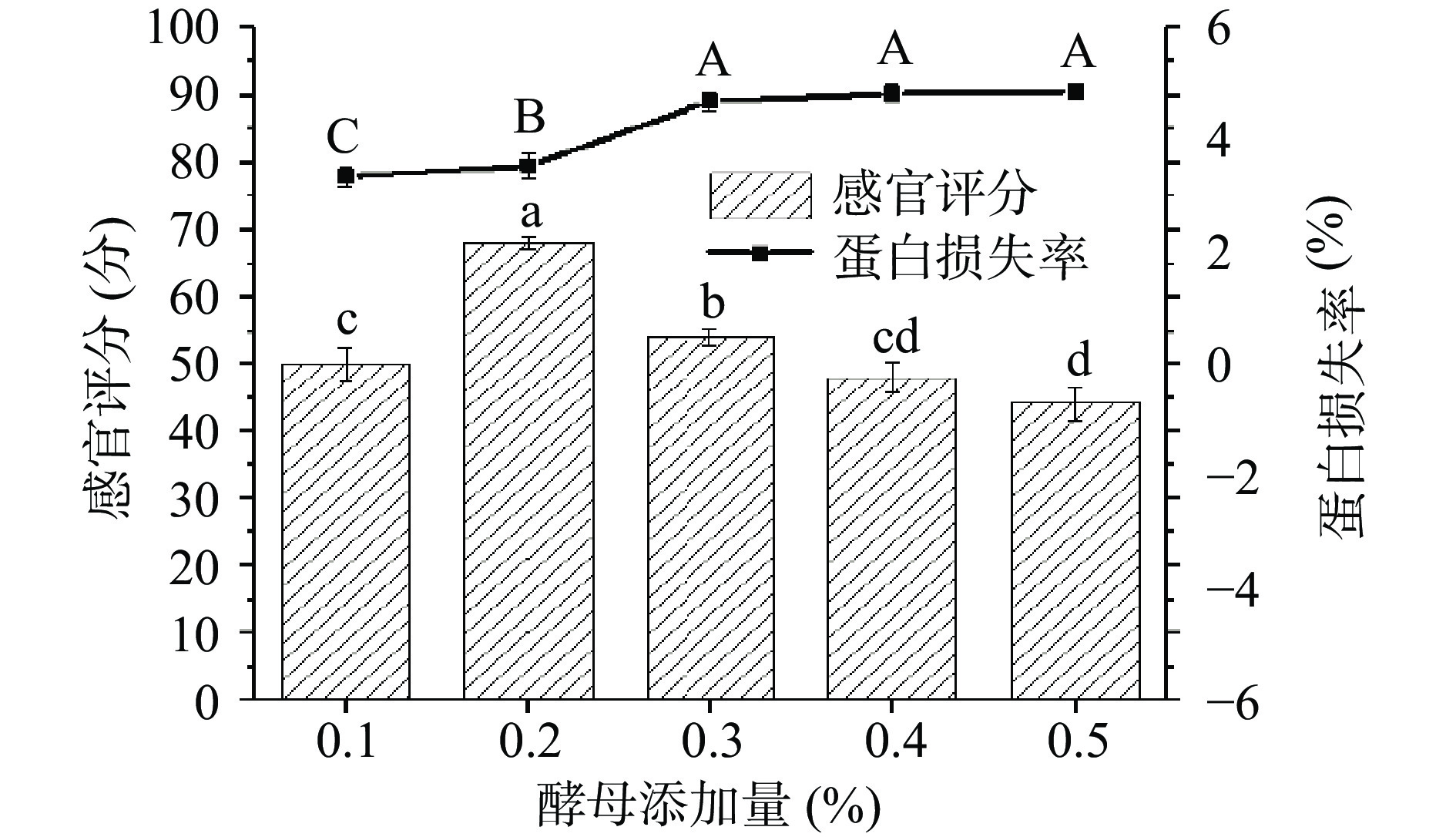

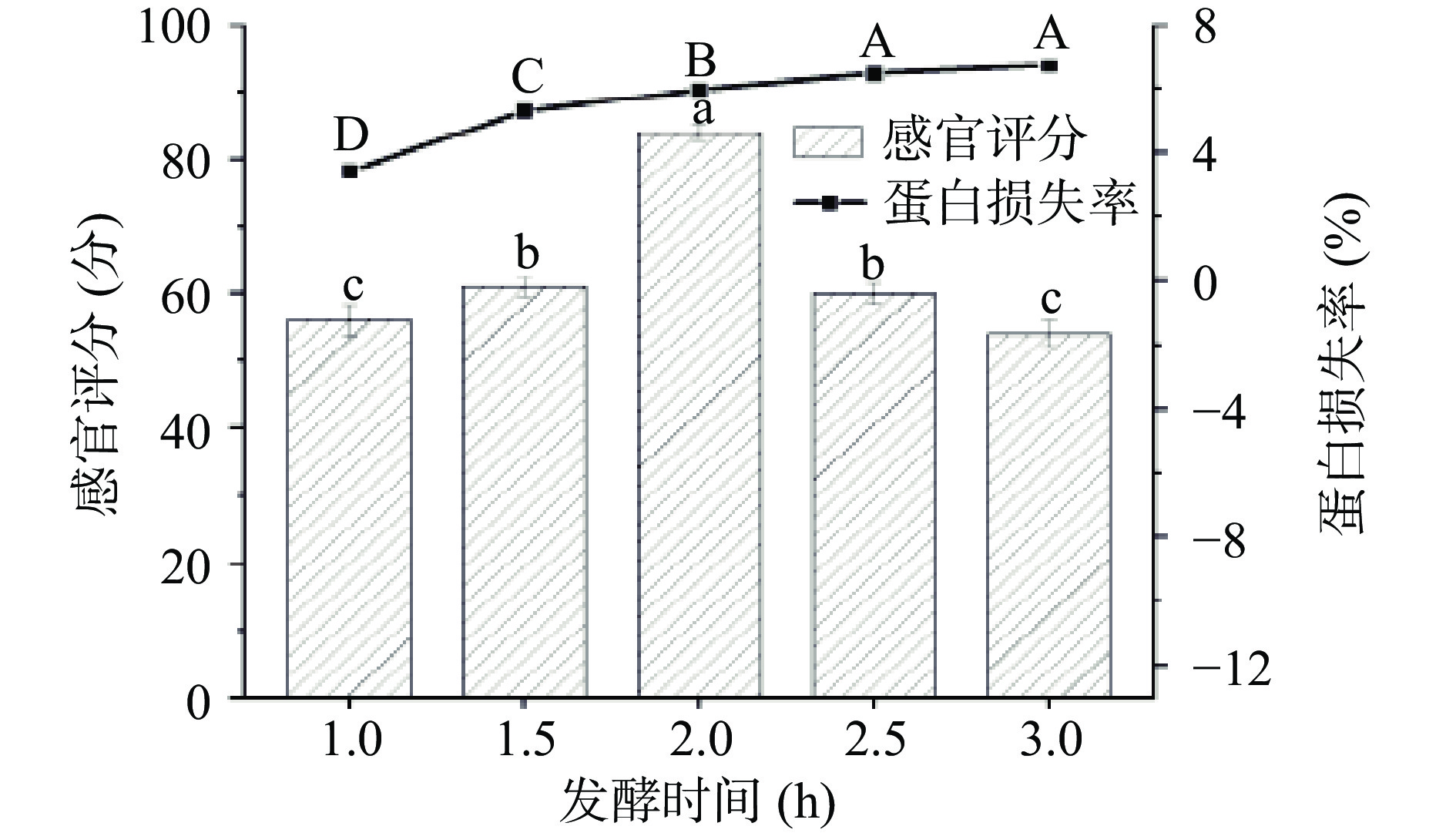
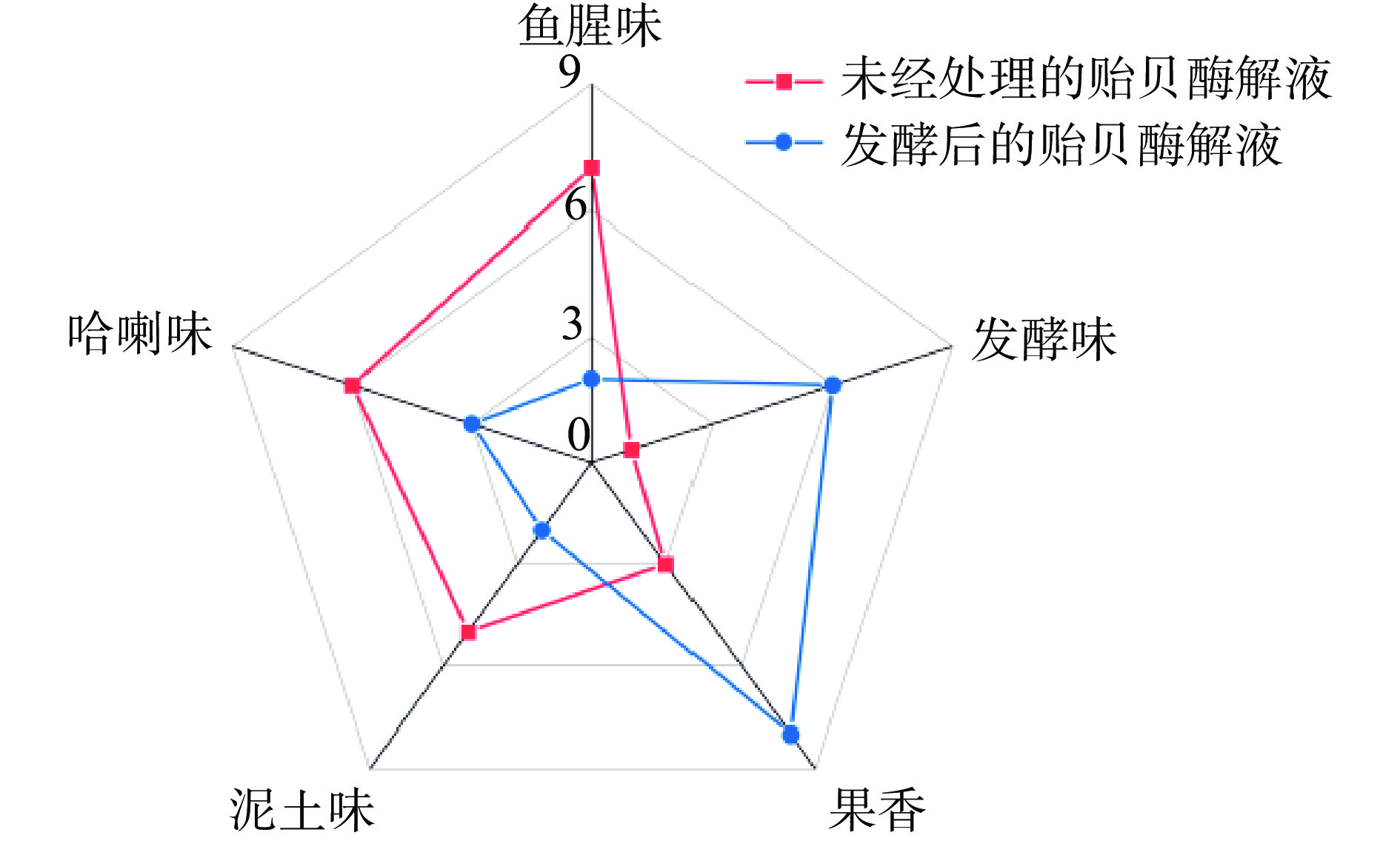

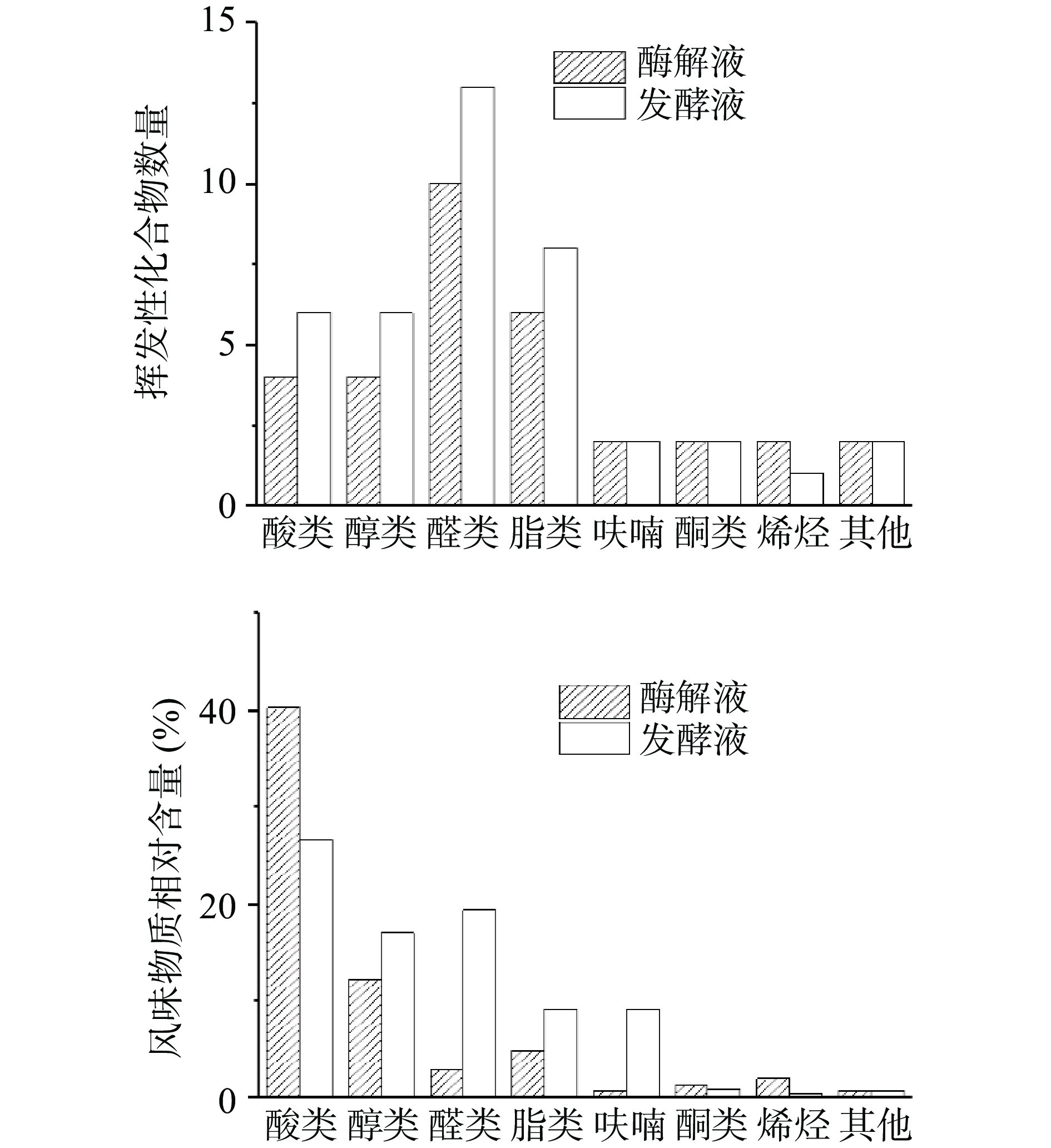
 下载:
下载:



